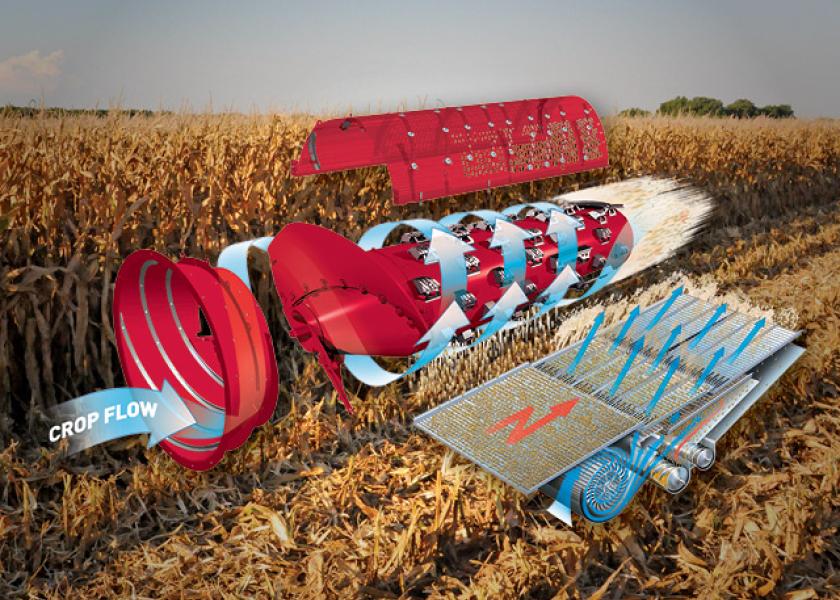How a Combine Works

A combine is a system that starts at the header and ends with the planter. No component functions independently; the header, feeder house, thresher, separator, cleaning fan and straw chopper all interact with effects that can reach all the way to planting the following spring.
“A combine is a really sophisticated machine, when you consider everything it’s doing at one time,” says Kelly Kravig, Case IH harvest marketing manager. “It’s taking in crop, threshing it, separating the grain and dispersing the residue, and all those processes have to interact smoothly to get optimum performance.”
Take in the crop. Headers and feeder houses are the first contact point for crop moving into a combine. Small grain and soybean platforms in particular influence combine performance. Combines thrive on smooth, even feeding of crop into the machine. Bunch-feeding due to misadjusted reels on platforms dramatically increases grain damage and loss out the back of the machine.
Feeder houses are more than merely conveyors between the header and the combine. The feeder house drum and conveyor chain flatten the inflowing crop and prepare it for smooth feeding into the separator. Center-feeding, where the majority of the crop travels up the center third of the feeder house, decreases efficiency. If feeding properly, paint should be worn the full width of the feeder house floor.
Thresh. The threshing segment of a combine uses the rubbing action between the threshing lobes or rasp bars and the surface of the concave to knock kernels from cobs, beans from pods and seeds from seed heads. The effectiveness of that rubbing action is proportional to the rotor/cylinder speed and the clearance between the threshing components and the surface of the concave. Too tight, and grain gets crushed. Too fast, and grain gets cracked. The optimum concave clearance and threshing speed for a particular crop at a specific moisture is in the owner’s manual.
Separate. The separating portion of a combine is a combination of the cleaning fan, upper sieve and lower sieve. The goal is to “float” the mat of grain and residue across the sieves on a cushion of air so the shaking motion of the sieves allows the grain to fall down through the residue.
“Some guys open up the top sieve and do all their cleaning with the lower sieve,” says Jeff Gray, product coordinator for Claas Lexion. “They think that keeps any grain from going out the back. The problem is that overloads the bottom sieve and the tailings return. The upper sieve should do the main separating. The lower sieve is for fine-tuning the sample.”
Manage residue. Stalk choppers on combines used to be secondary to threshing and separating grain. But Bt cornstalks and improved small grain genetics, combined with reduced or no-till practices, have turned residue management into a critical function.
“[In] what condition do you want to leave the residue, with your next pass in mind?” says Matt Badding, John Deere tactical marketing manager for harvest equipment. “If your next pass is next spring with a no-till planter, then the way you run and set your straw chopper is a big deal.







